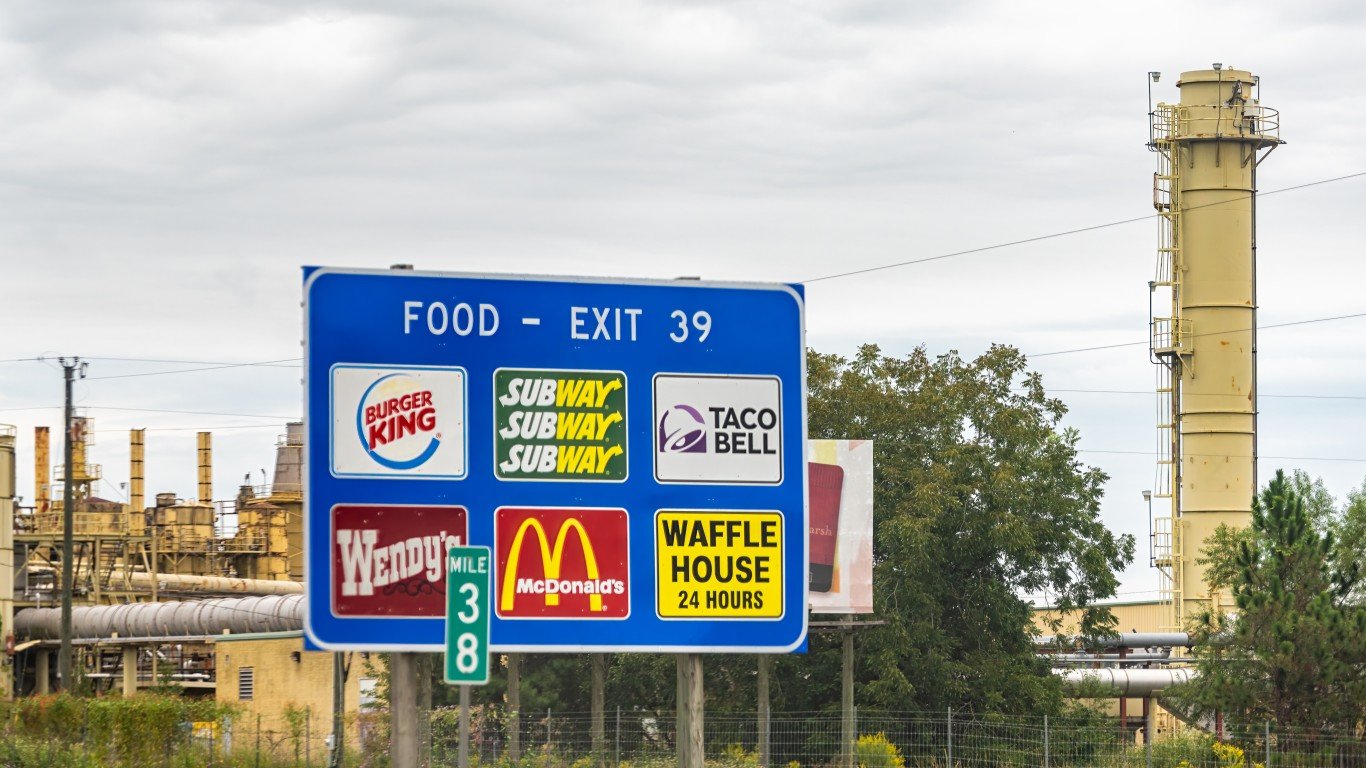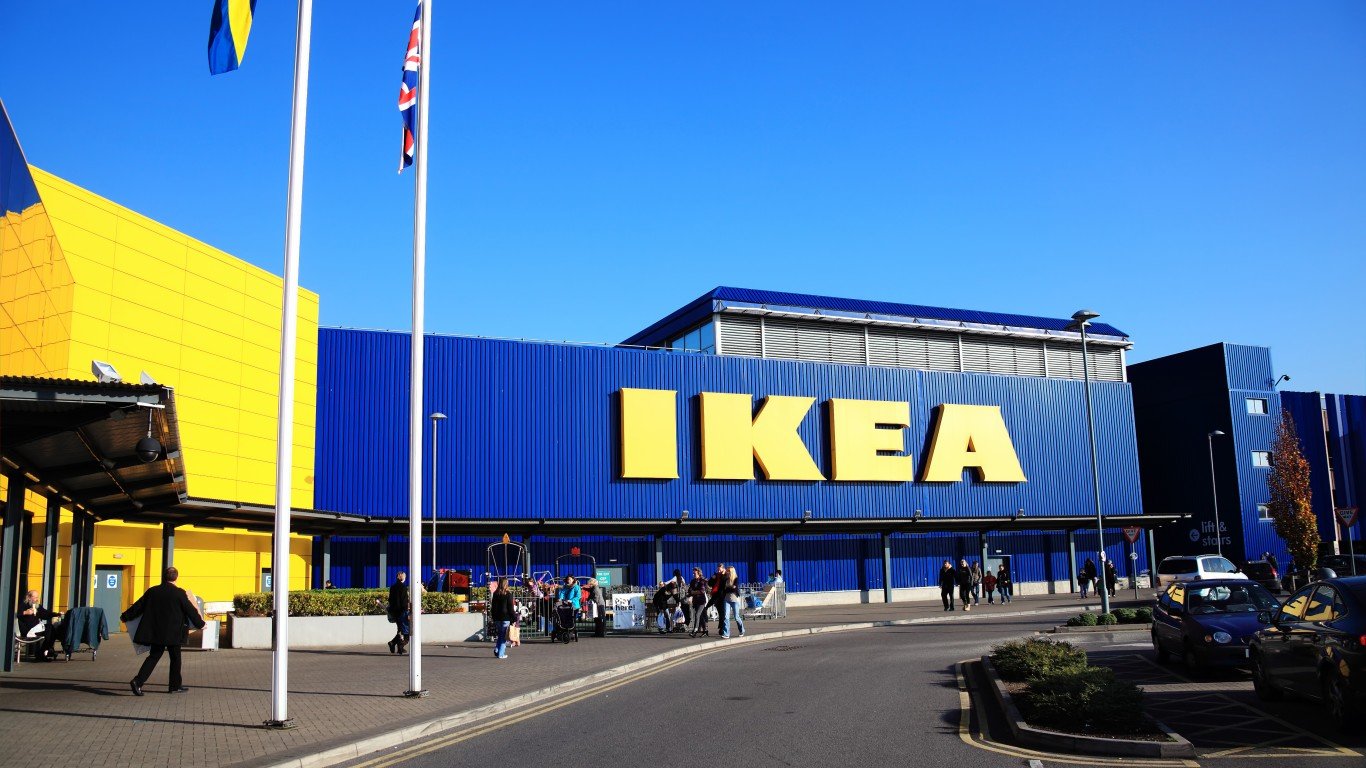You know the story. The Chicago Cubs haven’t won a World Series since 1908, by far the longest championship drought in baseball. So naturally, fans take this to mean their franchise is cursed, and in response, butcher everything from goats to Steve Bartman’s personal life in search of a cure. But what you might not know is that the reason for the Cubs’ struggles may have nothing to do with luck, or a century-long jinx. And in fact, from a dollars-and-cents standpoint, there may be a way to bring a title back to Wrigleyville. Source: Image via Floyd Wilde, Flickr.
Source: Image via Floyd Wilde, Flickr.
Step one: Renovate Wrigley Field
How? It starts with Wrigley Field. Home of the Cubs for the last 100 years, the ballpark isn’t your typical Major League venue. Speaking from experience, what Wrigley lacks in 21st century amenities – a video screen, a reliable pitch tracker, bullpens, batting cages, livable locker rooms, a reasonable number of luxury boxes, and…urinals – it makes up for in history.
And this nostalgia puts bodies in the seats. When compared to actual on-field play, the Cubs have the least-sensitive attendance in the sport. In 2014, for example, the average ticket to a game at Wrigley is almost $45, third highest in the MLB. The team currently has the third-worst record in baseball.
But fan devotion only goes so far, and it doesn’t keep the Cubs from wanting to win. After buying the franchise for $900 million in 2009, a new ownership group led by Tom Ricketts has placed a greater importance on organic growth. From the signing of ex-Boston Red Sox GM Theo Epstein, to last year’s trade of Alfonso Soriano, the team has embraced the strategy.
The obvious next step is a Wrigley Field renovation. In a newly released video, Ricketts revealed plans to construct over a half-dozen signs in the outfield, including a massive JumboTron in leftfield. The thinking is that more ads will boost revenue, which can then be spent on players. “Being unable to improve our park puts us in the hole by tens of millions of dollars every year. Our competitors in the Central Division don’t suffer that restriction. They can put up signs in the outfield and create other revenue to invest in their baseball teams,” Ricketts told fans on Thursday.
While a legal battle with neighborhood rooftop owners – who will lose sight lines into Wrigley if the renovations are made – may slow the process, it likely won’t prevent it. The city of Chicago is already in support of an expansion, and given the chance more ad money could make the team better, the court of public opinion is largely on board.
Step two: Rake in the advertising money
How much money could the Cubs make? The final number may be enormous. As I wrote a few weeks ago:
“Bloomberg, which tracks sponsorship revenue, pegs the Cubs’ figure at $18 million per year. That’s a mere 19th in all of baseball, far behind teams like the New York Yankees ($84 million), Boston Red Sox ($40 million), and L.A. Dodgers ($39 million). Even the Houston Astros, who lost an MLB-worst 111 games last season, make more from sponsors.”
Although the Cubs haven’t made an official appraisal, it’s reasonable to think the construction of multiple LED signs, a JumboTron, and increased bleacher space (also part of the plan) could up sponsorship income by $40 million to $50 million a year. In a best-case scenario, a take similar to that of the Yankees would boost annual revenues by $66 million.
Current sponsors Anheuser Busch Inbev (NYSE:BUD), Bank of America (NYSE:BAC), PepsiCo (NYSE:PEP) and Toyota (NYSE:TM) will probably have first crack at the ad space. The latter already has one sign in Wrigley’s left field bleachers, while Anheuser Busch is the park’s exclusive beer sponsor. I also wouldn’t be surprised if tech companies like Microsoft (NASDAQ:MSFT) and Sirius XM (NASDAQ:SIRI) were in the discussion – each has a fairly large MLB footprint.
Step three: Improve the team
It’s no secret Chicago could stand to improve its team, and the final step is rather simple. After a fraction of the new sponsorship income is spent to pay down the private financing used to renovate Wrigley, the rest can be spent on players. With just $89 million in Major League contracts on the books this year, the Cubs possess the eighth lowest payroll in baseball.
Assuming it nets between $20 million and $30 million a year for player upgrades, a raise of that magnitude would place the team among the MLB’s ten largest payrolls.
Let’s say the Cubs decide to spend that money on free agents. Here are a few of the potential players they could sign after the 2016 season, along with their estimated annual salary figures (via Spotrac):
- SP Jordan Zimmermann, $16M
- SP Yovani Gallardo, $13M
- SP Johnny Cueto, $10M
- SP Hisashi Iwakuma, $7M
- OF Nick Markakis, $17M
- 1B Mike Napoli, $16M
- OF Justin Upton, $15M
- OF Alex Rios, $14M
- 1B Billy Butler, $13M
- OF Yeonis Cespedes, $11M
- 2B Ben Zobrist, $8M
Adding it all up, the Cubs would theoretically have enough money for two front-end starting pitchers if upgrades were completed by 2016. Yeonis Cespedes or Justin Upton would also look nice in the Cubs’ lineup, and don’t forget about current players like Starlin Castro and Anthony Rizzo.
Castro becomes a free agent in 2021, and Rizzo will hit the open market in 2022. Both will likely cost between $15 million and $16 million a year to keep on the roster. Additionally, once called up, minor league prospects Javier Baez and Kris Bryant will be due for multi-million dollar contracts in the future.
The bottom line
As you can see, there are plenty of ways Chicago could spend an extra pot of sponsorship money. It might not guarantee a World Series in Wrigleyville, but a payroll boost certainly couldn’t hurt.
While there’s no way to know if Ricketts will actually go forward with his expansion plans, he sure seems adamant. And at the end of the day, why shouldn’t he be? There’s no reason a team as marketable as the Cubs should be financially hamstrung.
Essential Tips for Investing: Sponsored
A financial advisor can help you understand the advantages and disadvantages of investment properties. Finding a qualified financial advisor doesn’t have to be hard. SmartAsset’s free tool matches you with up to three financial advisors who serve your area, and you can interview your advisor matches at no cost to decide which one is right for you. If you’re ready to find an advisor who can help you achieve your financial goals, get started now.
Investing in real estate can diversify your portfolio. But expanding your horizons may add additional costs. If you’re an investor looking to minimize expenses, consider checking out online brokerages. They often offer low investment fees, helping you maximize your profit.
Thank you for reading! Have some feedback for us?
Contact the 24/7 Wall St. editorial team.



